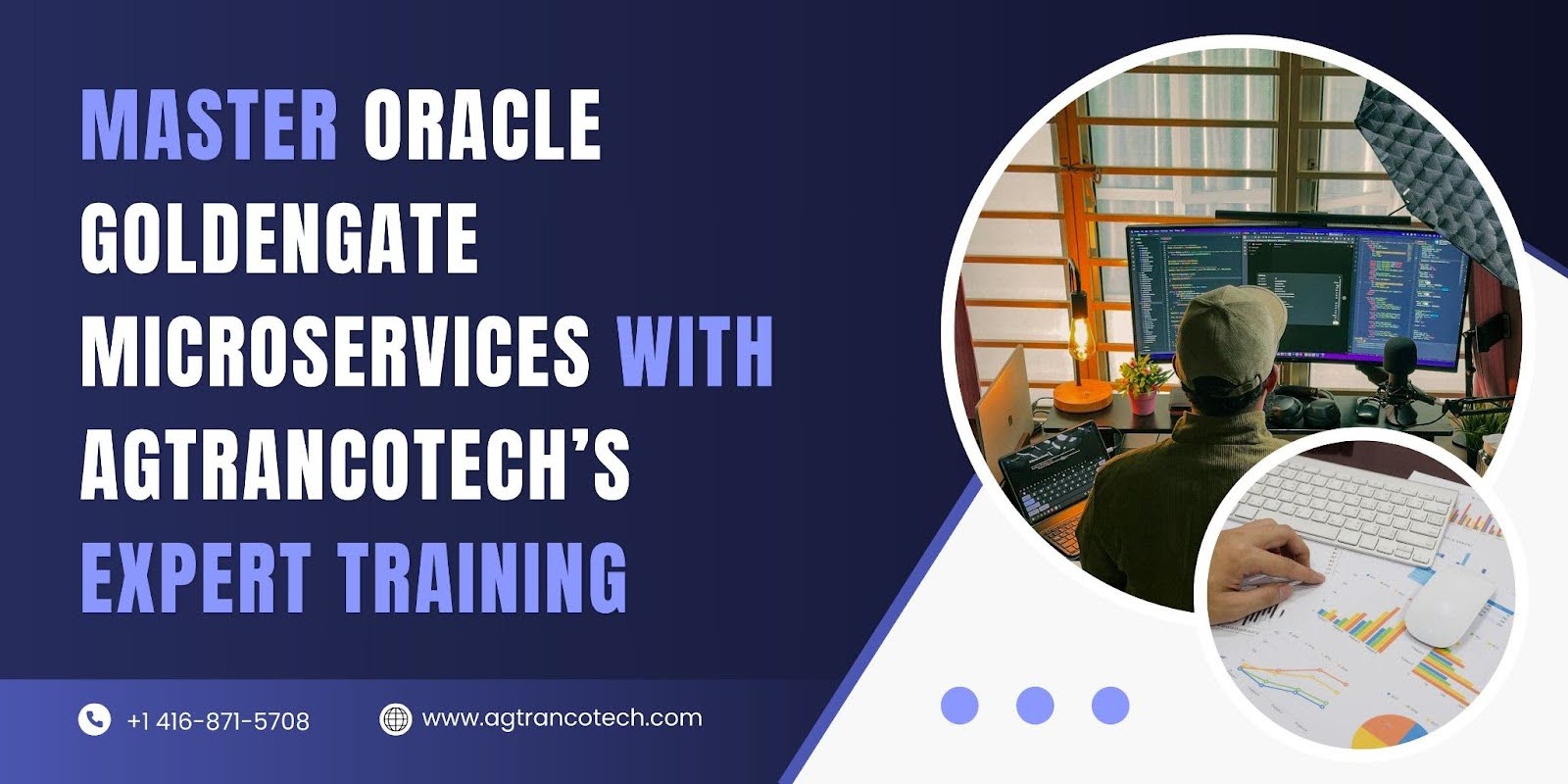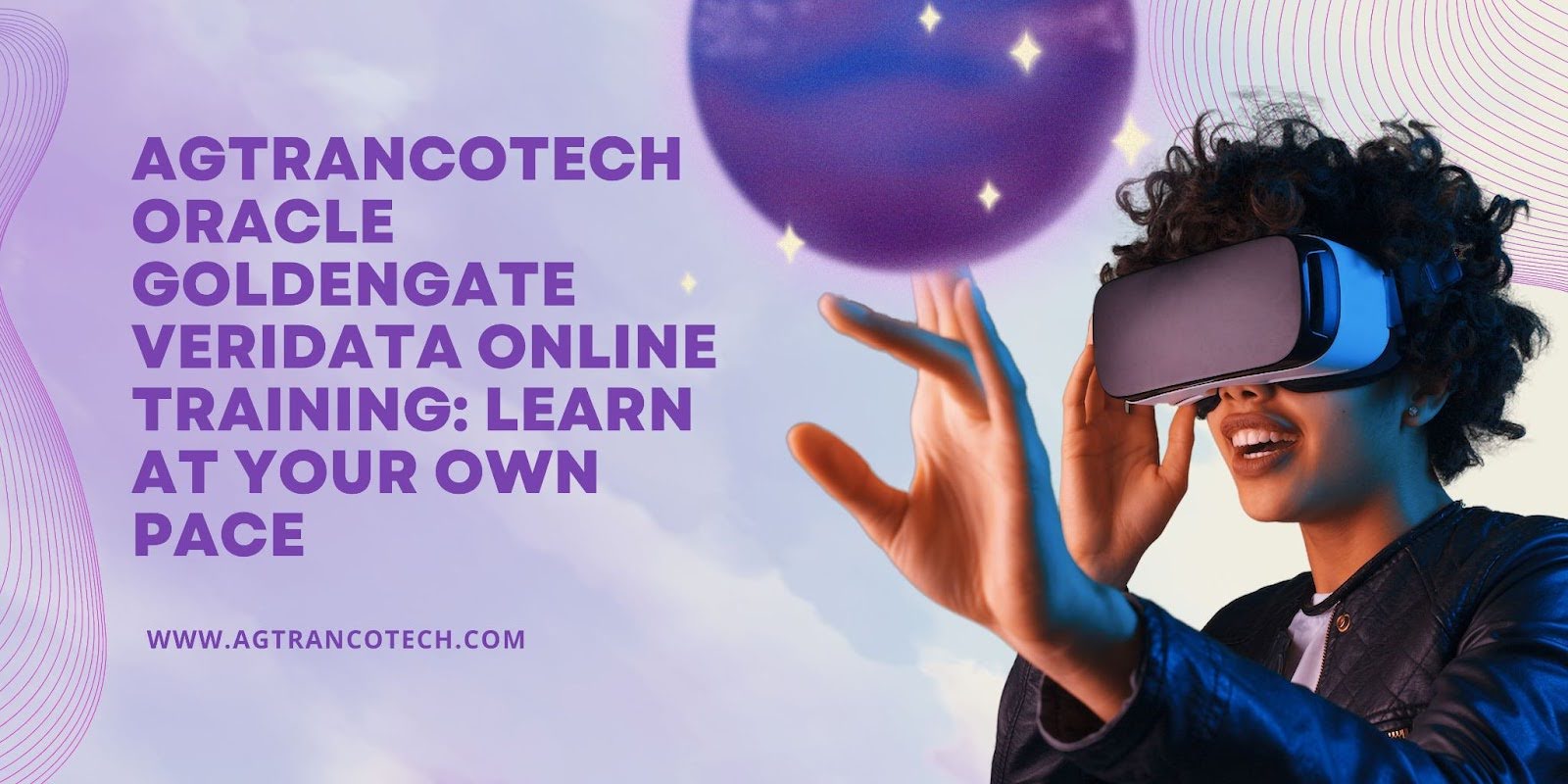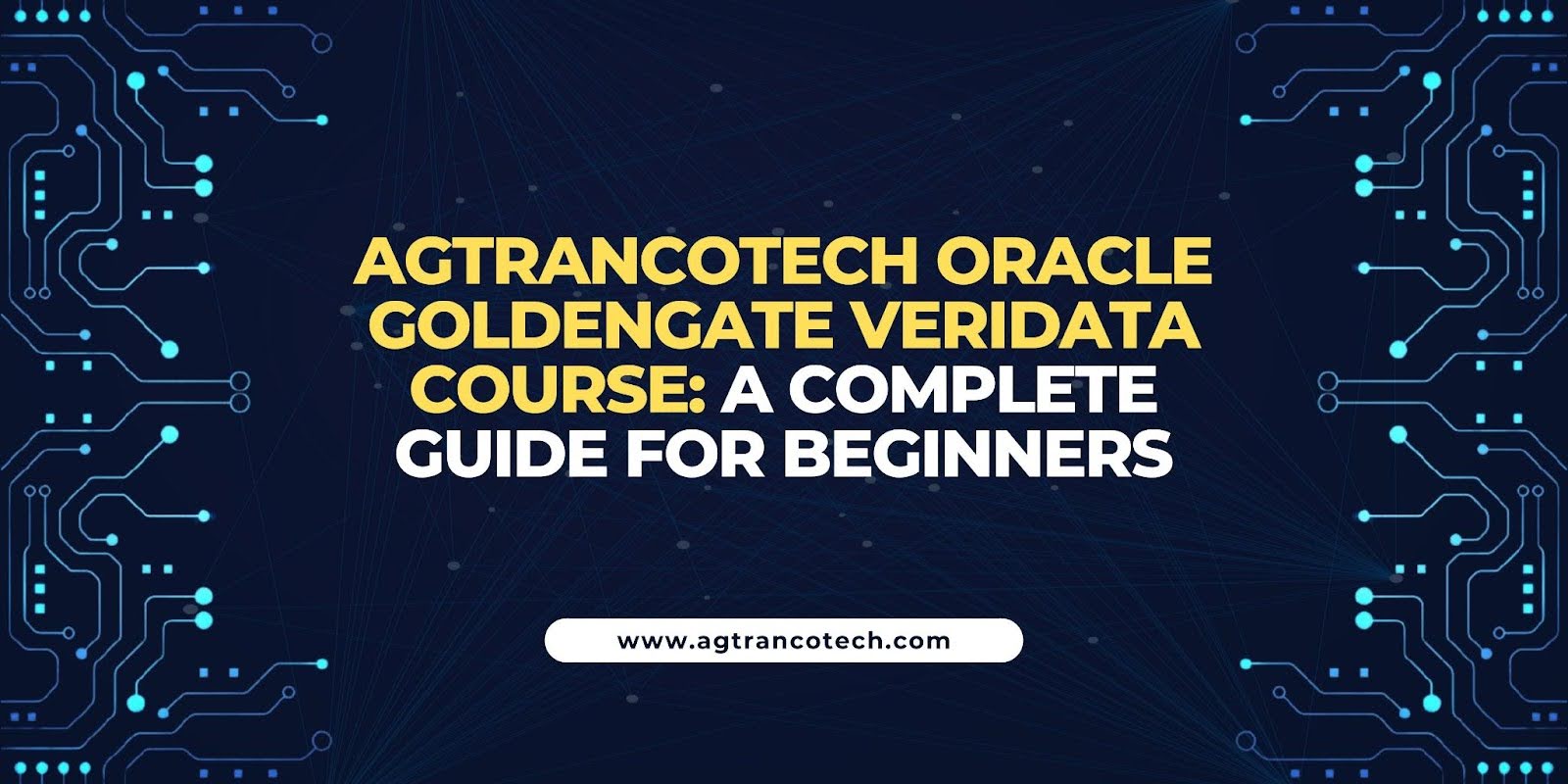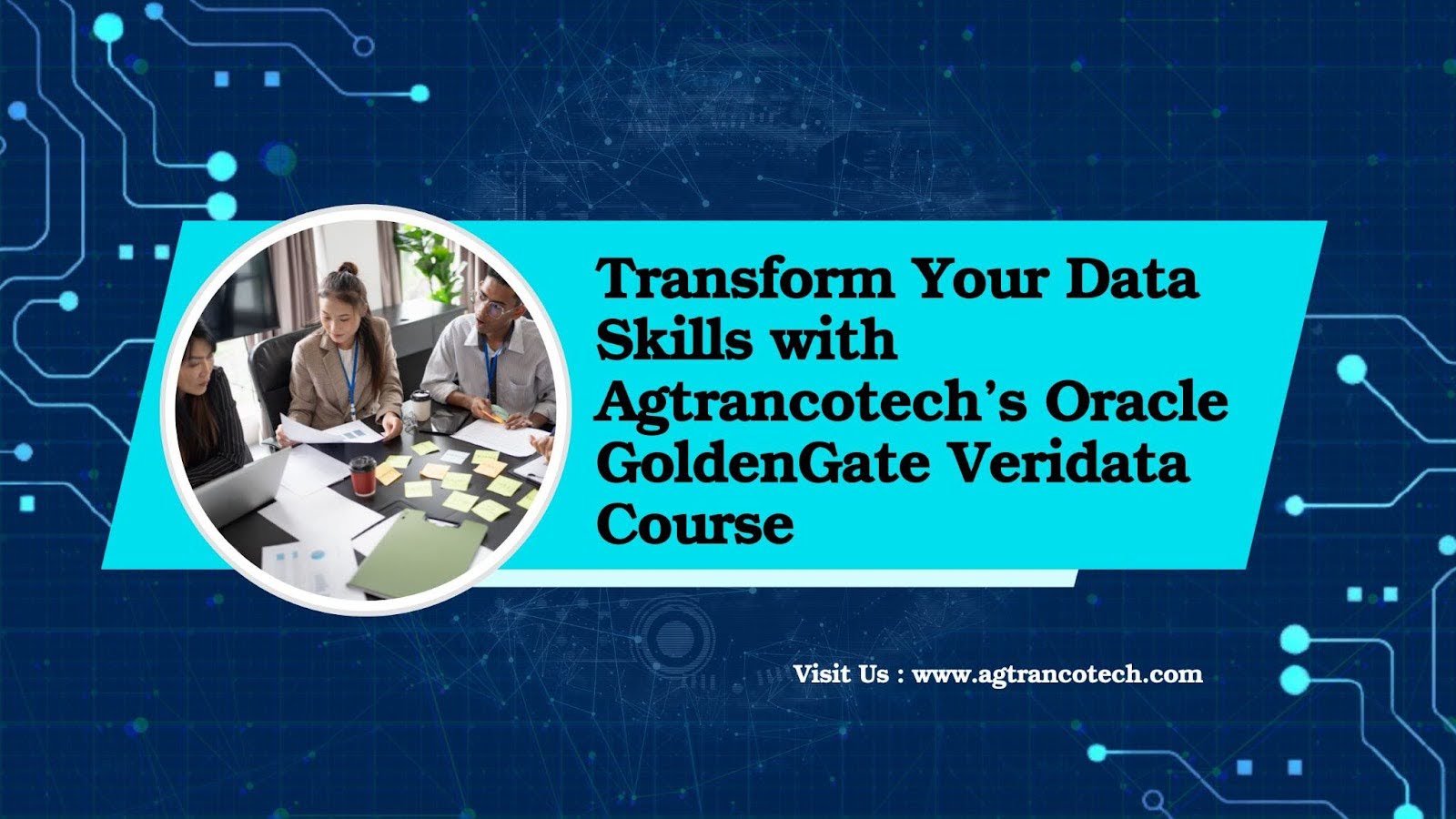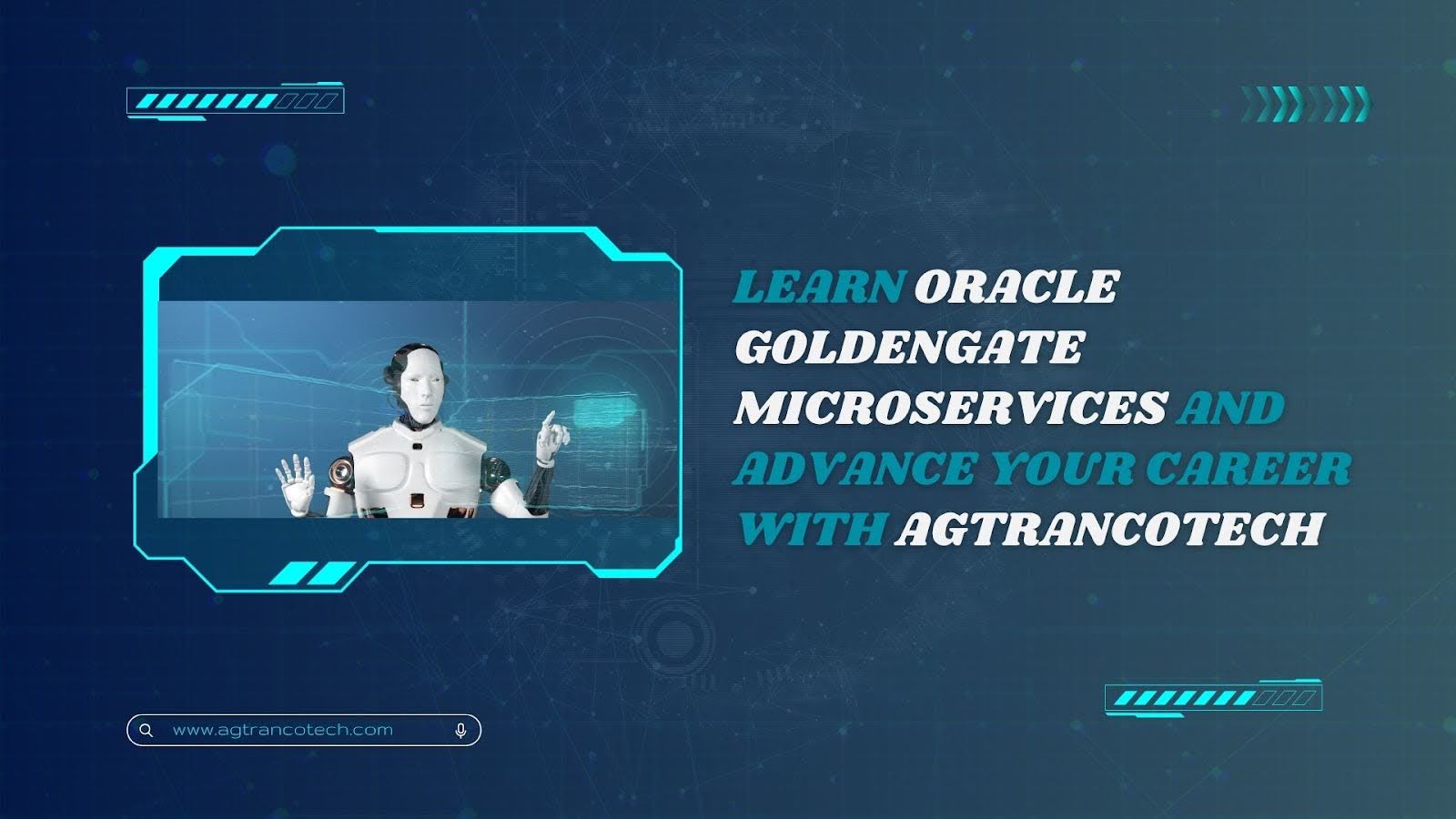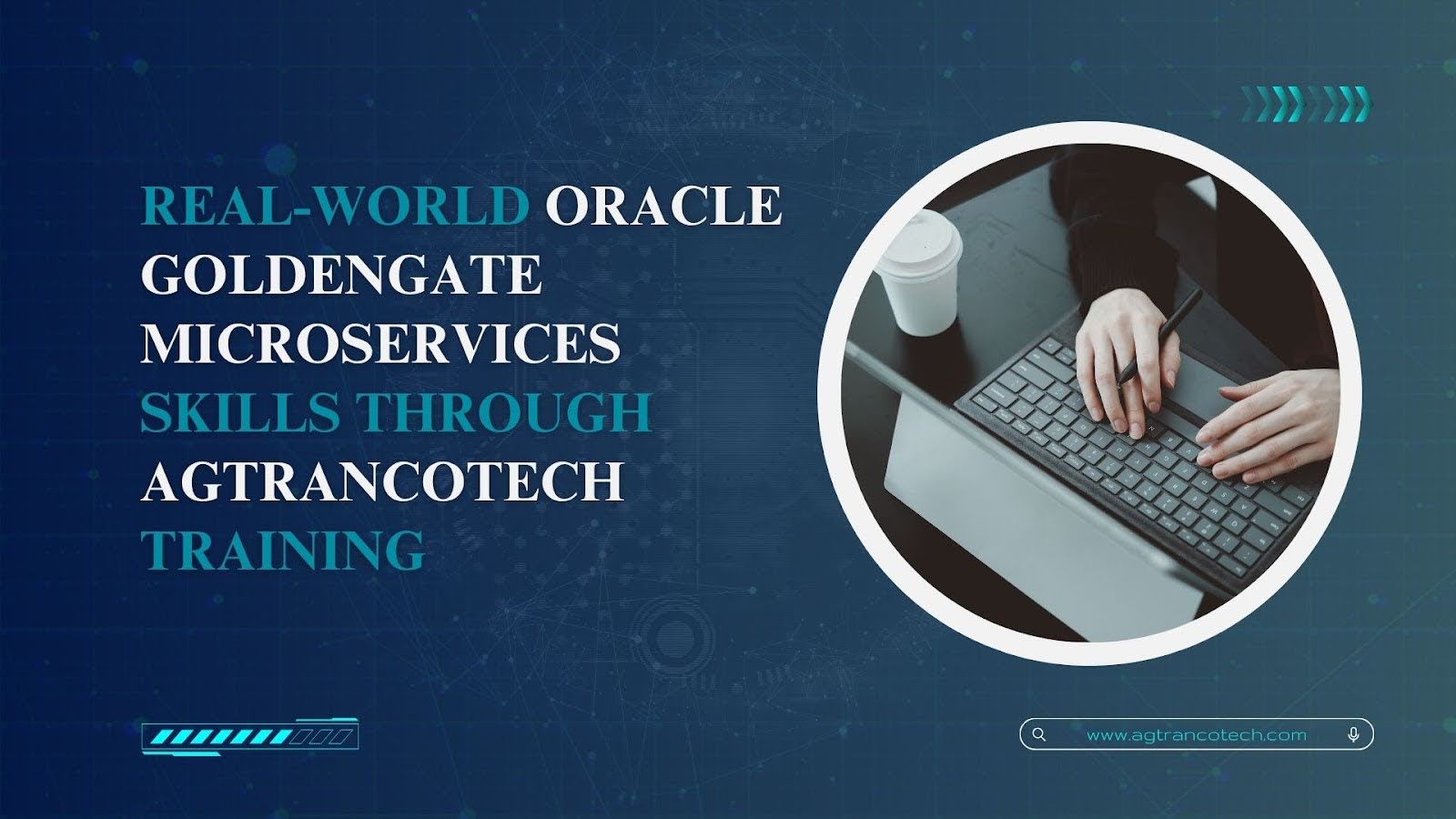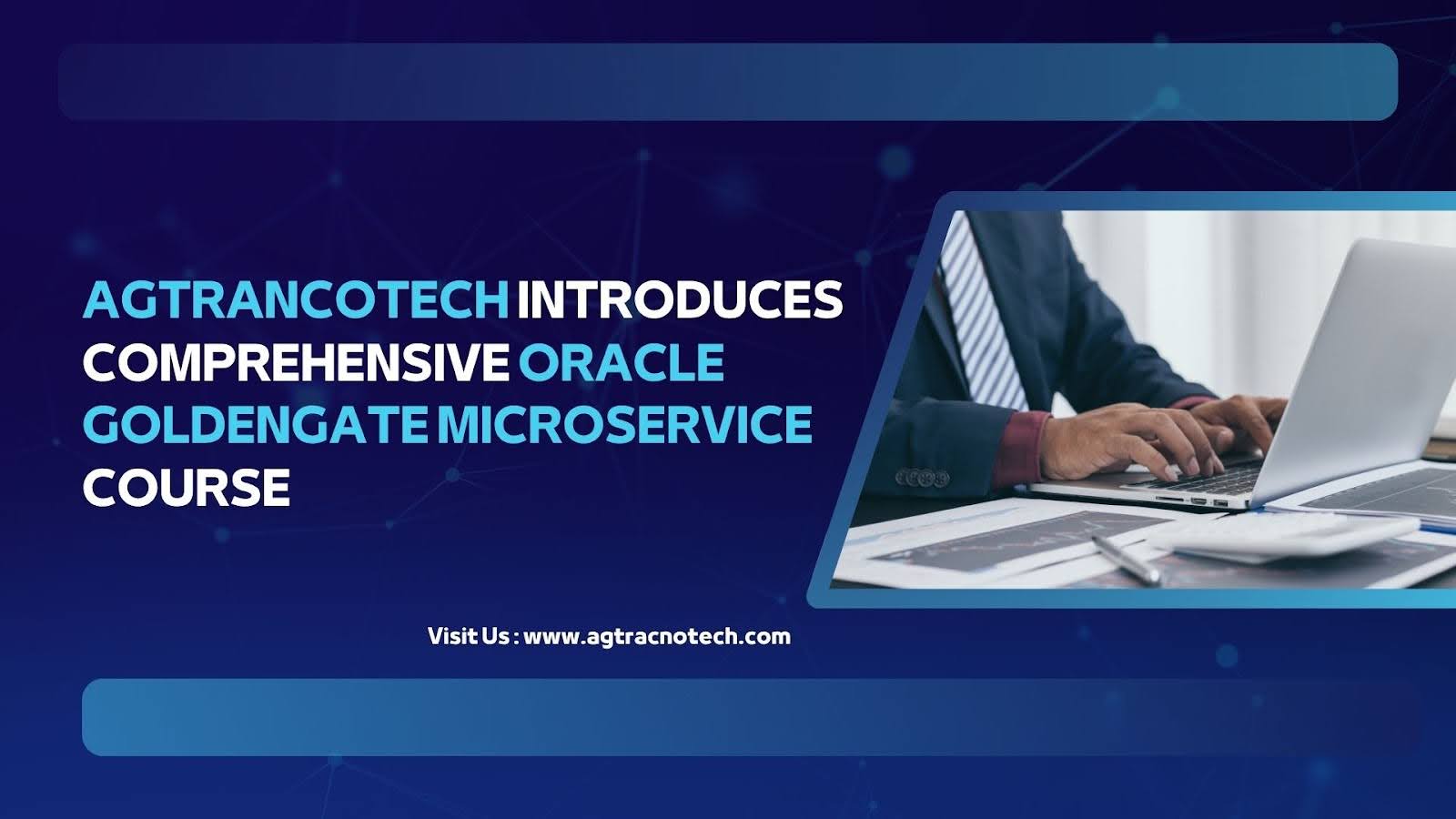In the rapidly evolving world of data engineering and enterprise integration, Oracle Goldengate Microservices has become a pivotal technology for real-time data replication and streaming across heterogeneous systems. But mastering Oracle Goldengate Microservices is not trivial: the architecture, components, troubleshooting, and performance tuning demand deep expertise and hands-on practice. That is precisely where Agtrancotech comes into play. With years of experience in Oracle Goldengate training and a curriculum tailored to real workplace challenges, Agtrancotech offers one of the most comprehensive and practical routes to becoming proficient in Oracle Goldengate Microservices.
In this article, you’ll learn:
- Why Oracle Goldengate Microservices is important today
- Core architecture and modules of Oracle Goldengate Microservices
- Key challenges and best practices
- How Agtrancotech structures its training to transform learners into practitioners
- Tips to get the most out of your training
- A concluding section and about Agtrancotech
Why Oracle Goldengate Microservices Matters
The demand for real-time data movement
In modern enterprises, data flows across multiple systems: on-premises databases, cloud data warehouses, streaming platforms, microservices, analytics systems, and more. Legacy batch ETL (Extract-Transform-Load) solutions no longer suffice when business users expect freshness, minimal latency, and continuous synchronization. This has driven wide adoption of change data capture (CDC) and streaming replication technologies.
Oracle Goldengate Microservices is Oracle’s modern, service-oriented evolution of Goldengate, built to meet these needs. While traditional Oracle Goldengate (classic architecture) is still used, the microservices edition brings enhanced flexibility, REST APIs, a browser-based UI, modular service isolation, and better governance. Organizations adopting Oracle Goldengate Microservices are able to simplify management, centralize control, and scale replication across hybrid cloud landscapes.
Key advantages of Goldengate Microservices
- Service isolation: Each component—extract, replicate, manager, admin, etc.—runs as an independent microservice, reducing inter-dependencies and making upgrades less risky.
- REST API and Web UI: Configuration, monitoring, and control are possible via REST API calls or browser interface, not purely command line.
- Plug-in extensibility: New features and capabilities can be added via microservices modules without disrupting the core engine.
- Scalability & management: Larger deployments, distributed topologies, and multiple replication streams can be more easily orchestrated.
- Security & governance: Fine-grained access control, audit logging, and centralized management lend better compliance support.
As businesses increasingly migrate to cloud or hybrid architecture, Oracle Goldengate Microservices stands out as a future-proof solution for robust, real-time data synchronization.
With such importance, professionals who master Oracle Goldengate Microservices become highly sought in roles such as data engineers, integration architects, DBAs, and cloud/analytics engineers.
Core Architecture & Components of Oracle Goldengate Microservices
To truly harness Oracle Goldengate Microservices, you must deeply understand its architecture and how its components interact. Below is a breakdown of key modules and workflows.
High-level architecture
At a high level, the Oracle Goldengate Microservices architecture is centered around modular, containerized services that communicate over REST, messaging, or internal API calls. The core elements include:
- Administration Server
- Manager Service
- Extract Service(s)
- Replicat Service
- Data Pump Service
- Distribution or Routing Engine
- REST API Endpoints & Web UI
- Security / Authentication / Authorization
These microservices operate in concert to perform tasks such as capturing data changes, routing them, transforming or filtering, and applying them to target systems.
Important modules & flows
- Administration / Control Plane
The Admin Service acts as the control plane: developers and administrators use it to configure, extract, replicate, parameter files, mappings, and monitor jobs. - Manager Service
The Manager service is responsible for overall orchestration and heartbeat monitoring. It ensures services are alive, restarts components if they fail, and manages the lifecycle of microservice processes. - Extract Service
Extract microservices read the transaction logs (e.g., Oracle redo logs, MySQL binlogs, etc.) and capture changes in the source database. You can have multiple Extract microservices for different tablesets or schemas. - Data Pump Service
In complex topologies, an intermediate extraction (data pump) is used to transport captured changes from source to downstream nodes, optionally filtering or aggregating. - Replicat Service
The Replicat service reads the data stream and applies those changes to the target database(s). You can define conflict resolution, data transformations, or filtering logic. - Routing & Distribution
For multi-node topologies, routing logic determines which changes go to which downstream services. - REST API & Web UI
The REST API and Web UI are integral to the microservices architecture. Administrators can configure, monitor, start/stop services, and check logs easily. - Security / Authorization
Security is layered: SSL/TLS encryption, role-based authorization, audit logging, and optional integration with external identity providers.
Deployment modes
You can deploy Oracle Goldengate Microservices in varied topologies:
- Single-node: All microservice modules on one server.
- Distributed nodes: Components placed across servers for scale and fault tolerance.
- Cloud / hybrid setups: Source on-prem, target in the cloud, or vice versa.
Fault tolerance & restartability
A key advantage of Oracle Goldengate Microservices is its ability to recover gracefully:
- Automatic restarts by the Manager Service
- Checkpointing for extract/replicat
- Monitoring and alerts for lag and errors
- Detailed logs and metrics
Challenges & Best Practices in Oracle Goldengate Microservices
Though Oracle Goldengate Microservices is powerful, real-world deployments can be complex. Awareness of common pitfalls and following best practices can make a major difference.
Common challenges
- Complex topologies
- Performance tuning
- Data mismatches
- Schema evolution
- Monitoring and alerting
- Upgrades and patching
- Security and compliance
Best practices
- Start small and scale gradually
- Maintain consistent naming conventions
- Segment high-load data
- Tune buffer sizes and commit intervals
- Use parallelism for performance
- Implement DDL governance
- Set alerting thresholds
- Test failover scenarios
- Document configurations
Mastering Oracle Goldengate Microservices requires a mix of technical and operational excellence.
How Agtrancotech Structures Its Oracle Goldengate Microservices Training
When choosing a training provider to master Oracle Goldengate Microservices, one thing that sets Agtrancotech apart is its focus on real-time, practitioner-oriented learning. Their approach is designed to escalate students from beginners to confident professionals who can deploy, manage, and troubleshoot Goldengate Microservices in real enterprise settings.
Training modes
Agtrancotech offers multiple formats:
- Online live sessions
- Self-paced recorded sessions
- Corporate and onsite training
Other highlights include:
- Preconfigured lab environments for Oracle Goldengate Microservices practice
- Lifetime learning support
- One-on-one mentoring
- Unlimited retakes within the access period
- Mock interviews and career guidance
- Certificate of completion
Curriculum overview
Agtrancotech’s Oracle Goldengate Microservices curriculum typically covers:
- Architecture overview
- Installation and configuration
- Extract and Replicat setup
- REST API and Web UI management
- Security and access control
- Performance tuning
- High availability and failover
- DDL replication
- Troubleshooting and logs
- Version upgrades and patching
- Hands-on lab exercises and capstone projects
Trainer expertise
Agtrancotech employs trainers with more than 17 years of experience, having trained thousands of students and delivered hundreds of corporate sessions. Their teaching style emphasizes simplicity, clarity, and practical exposure.
Expected outcomes
After completing the Agtrancotech course in Oracle Goldengate Microservices, learners can:
- Design and deploy replication topologies
- Configure extract and replicat microservices
- Troubleshoot issues and optimize performance
- Handle schema changes
- Prepare confidently for technical interviews
With Agtrancotech, the aim is not just knowledge acquisition, but complete readiness for professional implementation of Oracle Goldengate Microservices.
Tips to Maximize Learning Success
To get the best from Agtrancotech training in Oracle Goldengate Microservices:
Before the course
- Review basic database concepts and Linux commands
- Prepare a small lab setup for practice
- Set clear career goals
During the course
- Engage actively and ask questions
- Follow each lab hands-on
- Take detailed notes
- Test failure scenarios to understand resilience
After the course
- Revisit recordings to reinforce learning
- Continue practicing
- Work on small real-world simulations
- Join data engineering communities to stay updated
By blending Agtrancotech’s structure with consistent self-study, you can confidently master Oracle Goldengate Microservices.
Example Use Case: Migrating On-Prem to Cloud
A company wants to replicate its on-prem Oracle database to a cloud data warehouse in real time.
Agtrancotech’s training teaches how to:
- Configure Oracle Goldengate Microservices on both environments
- Securely connect via SSL/TLS
- Map source to target schemas
- Tune performance parameters
- Handle DDL replication and schema evolution
- Monitor replication lag and apply fixes
This practical simulation mirrors real-world challenges that professionals face. Agtrancotech ensures learners can manage every stage—from architecture to troubleshooting—using Oracle Goldengate Microservices effectively.
About Agtrancotech
Agtrancotech (Agarwal Training and Consulting) is a global IT training and consulting organization specializing in Oracle technologies, database replication, and integration tools. Since its inception, Agtrancotech has trained thousands of professionals and provided consulting solutions to organizations worldwide.
The company focuses on high-demand technologies such as Oracle Goldengate Microservices, Oracle Goldengate Classic, Veridata, and advanced database administration. Each course is designed to combine theoretical foundations with real-time project-based learning.
Key highlights of Agtrancotech include:
- Expert trainers with decades of hands-on industry experience
- Comprehensive and up-to-date course content
- Flexible training modes—live, recorded, and corporate sessions
- Realistic lab environments for practical exposure
- One-on-one mentoring and lifetime support
- Assistance with certification and career advancement
With a mission to empower IT professionals through practical and affordable training, Agtrancotech continues to be a trusted name for individuals and enterprises seeking excellence in Oracle Goldengate Microservices and related technologies.

